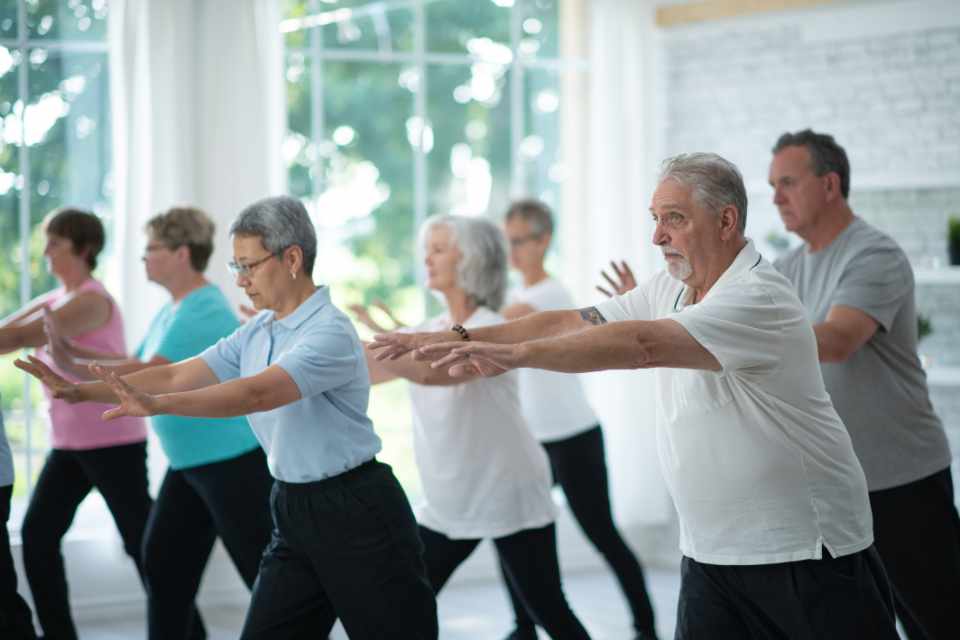Over 60% of people aged over 65 suffer from osteoarthritis. In England, this means about 8 million people. It is the most common joint disorder and mainly affects the hands, feet, knees or hips. Risk increases with age, weight and a previous joint injury. And because it is a progressive and chronic condition that can mean years of life lived with pain and disability. Many people take non-steroidal anti-inflammatories to help with the pain. But here I explain why these might not be the best solution for osteoarthritis.
Osteoarthritis is the type of arthritis associated with wear and tear. Cartilage covers the ends of bones that form the joint. It should be smooth but can become damaged and roughened. Damaged cartilage may thin out and expose the bone. When bones rub together in the joint it causes inflammation and pain.
People with chronic osteoarthritis describe the pain as a constant, dull ache. But there can also be episodes of sharp pain. Common medications for pain relief are the non-steroidal anti-inflammatory drugs or NSAIDs. They include; high dose aspirin, though not low dose aspirin; ibuprofen; naproxen and diclofenac. These medicines do not cure the condition but do help to mask the symptoms.
The problems with NSAIDs
One problem is that NSAIDs are not always effective for pain relief. They can also have serious side effects such as increasing the risk of gastrointestinal bleeding. And regular use can increase the risk of heart attack and stroke. So, a European review looked into NSAIDs use. Recommending the lowest effective dose, for the shortest possible time. But as we know, osteoarthritis is a chronic condition, requiring ongoing treatment.
There is also evidence that NSAIDs damaged cartilage in the joints. In effect, this means that taking the NSAIDs for pain relief makes the osteoarthritis worse.
While surgery is an option, it is usually not offered to younger people. And, this can mean years of ‘watchful waiting’. Even surgery may not be the answer. In one study, even 5 years after surgery up to 14% of people still had pain.
Other medications for osteoarthritis
Since doctors know about the problems with NSAIDs they often recommend paracetamol as an alternative. It is safe for most people but can have serious side effects if taken in excess of the recommended dose. And interactions with other medications can occur.
In the search for other alternatives, scientists developed another class of drugs, the COX-2 inhibitors. But in studies, as with NSAIDs these drugs also increase the risk of cardiovascular problems.
Topical NSAIDs are a useful alternative for some people. And they have less risk of side effects than the oral NSAIDs. But in general, the lack of safe and effective medicine means many people turn to complementary health.
Are natural remedies the best solution for osteoarthritis?
Trials show that natural remedies and alternative treatments are safe and effective. Studies show that they are at least as effective as NSAIDs for osteoarthritis. They slow the progression of the disease with fewer side effects.
There are many herbal medicines that show benefits in trials, for use in osteoarthritis. Here are some of them:
Turmeric reduces inflammation and decreases pain. It is also a strong antioxidant that helps to reduce damage to the joint.
Celery seed is at least as effective as ibuprofen and naproxen in trials. It reduces inflammation and relieves pain. It also protects against the gastrointestinal irritation of NSAIDs.
Devil’s claw is anti-inflammatory and pain-relieving for acute and chronic joint pain.
Cat’s claw contains powerful antioxidants that relieve inflammation. It is often used in the traditional treatment of osteoarthritis.
Frankincense the ancient medicine mentioned several times in the Bible. It relieves the pain of arthritis and improves joint function.
While these herbs all show benefits for osteoarthritis, herbalists generally don’t use herbs individually. Herbalists generally combine herbal medicines into a formula. The synergy between two or more herbs in a blend means the combination can enhance the overall action. So, herbal formulas made by trained herbalists may be more effective. For instance, osteoarthritis was significantly improved by personalised herbal treatment following a consultation.
Other complementary therapies also help to relieve osteoarthritis. Spinal manipulation therapies such as osteopathy and chiropractic are helpful. And acupuncture, which is the most commonly used alternative therapy for osteoarthritis.
Acupuncture and osteoarthritis
Scientific trials support the use of acupuncture for pain relief. The benefits of a course of acupuncture for osteoarthritis provided between 50 and 90% improvement, 12 months after the treatment. Pain relief from acupuncture was better than physiotherapy. Acupuncture also promotes repair of cartilage and improves joint function. It is also safe to use alongside medicines from the doctor or herbal remedies.
So perhaps natural solutions might offer the best solution for osteoarthritis after all.
You might also like my article 8 natural alternatives to NSAIDs








0 Comments